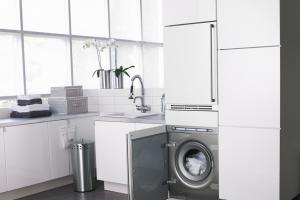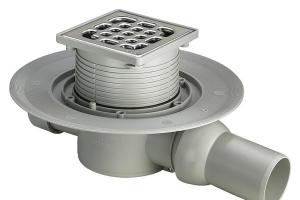Proven methods to remove mold in the bathroom on tiles and other surfaces
For mold to "attack" the bathroom, you don't need much: high humidity, insufficient ventilation, and now black, green, white spots "bloom" in secluded corners, in the seams between tiles or under the ceiling. The biggest problem is black mold, which can attack almost any surface. Green mold most often appears on the brickwork in the bathroom, while blue mold appears on window sills, doors and other wooden elements. In any case, the method of removal does not depend on the type of fungus.
Harm. The fact that mold in the bathroom spoils the appearance of the room is not so bad. Mold spores floating in the air are dangerous to human health. Poisoning causes headaches and heart pain, nausea. The constant presence of microspores provokes the development of bronchial asthma, chronic fatigue, depletion of the body's immune forces. At risk: small children, people with poor health, the elderly.
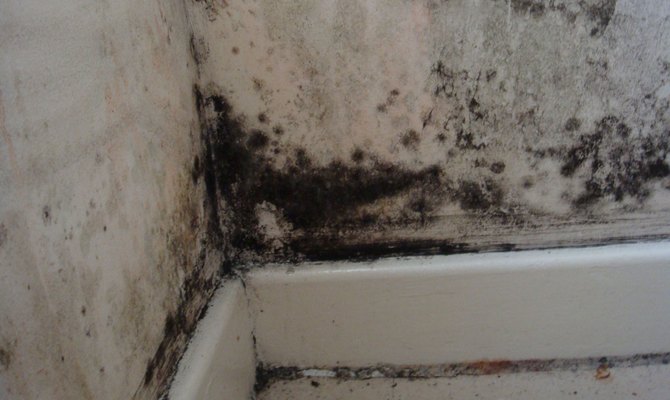 Black mold is the most common and dangerous
Black mold is the most common and dangerous Purchased and folk remedies for mold in the bathroom
1. Potassium permanganate and citric acid. If the mold on the tiles in the bathroom is just starting to grow, try removing the fungus with a sponge dipped in a solution of potassium permanganate (1 teaspoon of powder per 1 liter of warm water). It is not necessary to wash off the potassium permanganate. Citric acid will be an alternative: take 1 teaspoon of the substance in a glass of warm water.
As an option: use household bleach (most often it is "Whiteness"). Dilute a glass of the product with two glasses of warm water, apply the solution to the affected surface. If there are no small children, animals, allergy sufferers in the house, the mixture can not be washed off.
3. Hydrogen peroxide (3%). Use undiluted to clean grout lines between tiles. Spray the substance on the seams where the mold has “settled”, leave for 15-20 minutes, then wipe the surface with a rag.
Attention! Peroxide has a bleaching effect, so test on an inconspicuous area first.
4. Baking soda. Not only copes with mold, but also removes a specific musty smell. For 200 ml of water, take ½ teaspoon of powder. “Walk” with a sponge dipped in the solution over problem areas, wash off the remaining contamination with warm water.
5. Borax. Borax, which is sold in every pharmacy, helps to quickly get rid of mold in the bathroom. A glass of substance will need 2.5 liters of warm water. Dip a brush into the solution, process the walls, floor. It is not necessary to rinse off, remove the remaining moisture with a clean rag.
6. Copper sulfate. The product is toxic but effective. Dilute the substance with warm water (10 liters per 100 grams of vitriol), apply the composition with a brush to problem areas. After a few hours (according to the instructions), thoroughly wash and dry the walls, ventilate the room.
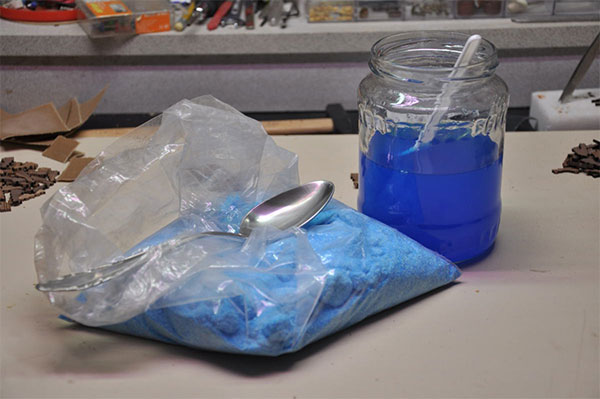 Copper sulfate should be applied with a brush and only on places affected by the fungus
Copper sulfate should be applied with a brush and only on places affected by the fungus 7. Essential oils. A good remedy for mold in the bathroom are tea tree oils, lavender, rosemary and grapefruit seed extract. In the first case, 1 teaspoon of the substance is enough for 1 glass of warm water, in the second - half. Apply the solution to the affected area, do not rinse.
How to remove deep-rooted mold in the bathroom
In especially neglected cases, when, looking at the bathroom, you understand that it will not be possible to clean the mold in simple ways, you will have to act radically:
- Beat off the tile, remove the wallpaper and the top layer of plaster.
- Thoroughly clean and dry the surface with a building hair dryer.
- Treat (according to the instructions) the walls, floor and ceiling with a special antiseptic that can be found at any hardware or hardware store.
- Only after that proceed to the finishing work.
Perform all procedures, especially those associated with toxic substances (containing chlorine and other harmful impurities), with a respirator and gloves. After using caustic compounds, be sure to ventilate the bathroom.
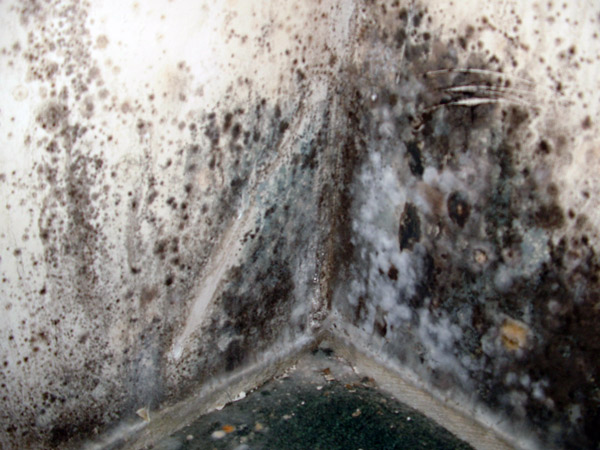 An example of when to act radically
An example of when to act radically
Preventing mold in the bathroom
- Check the operation of ventilation, open doors and windows (if any) more often to ventilate.
- Insulate the outer walls of the bathroom to prevent freezing and condensation.
- Inspect pipes and plumbing regularly for leaks. Even a slight leak is a constant source of high humidity.
- Replace cast iron pipes with plastic ones, they do not form condensate.
- Install a heated towel rail, an additional radiator. A good solution is the "warm floor" system.
- Do not dry laundry in the bathroom (with the exception of towels and laundry rags).
- Monitor the condition of the tiles. Coat cracked tile joints in a timely manner, regularly treat the grout with an antiseptic.

